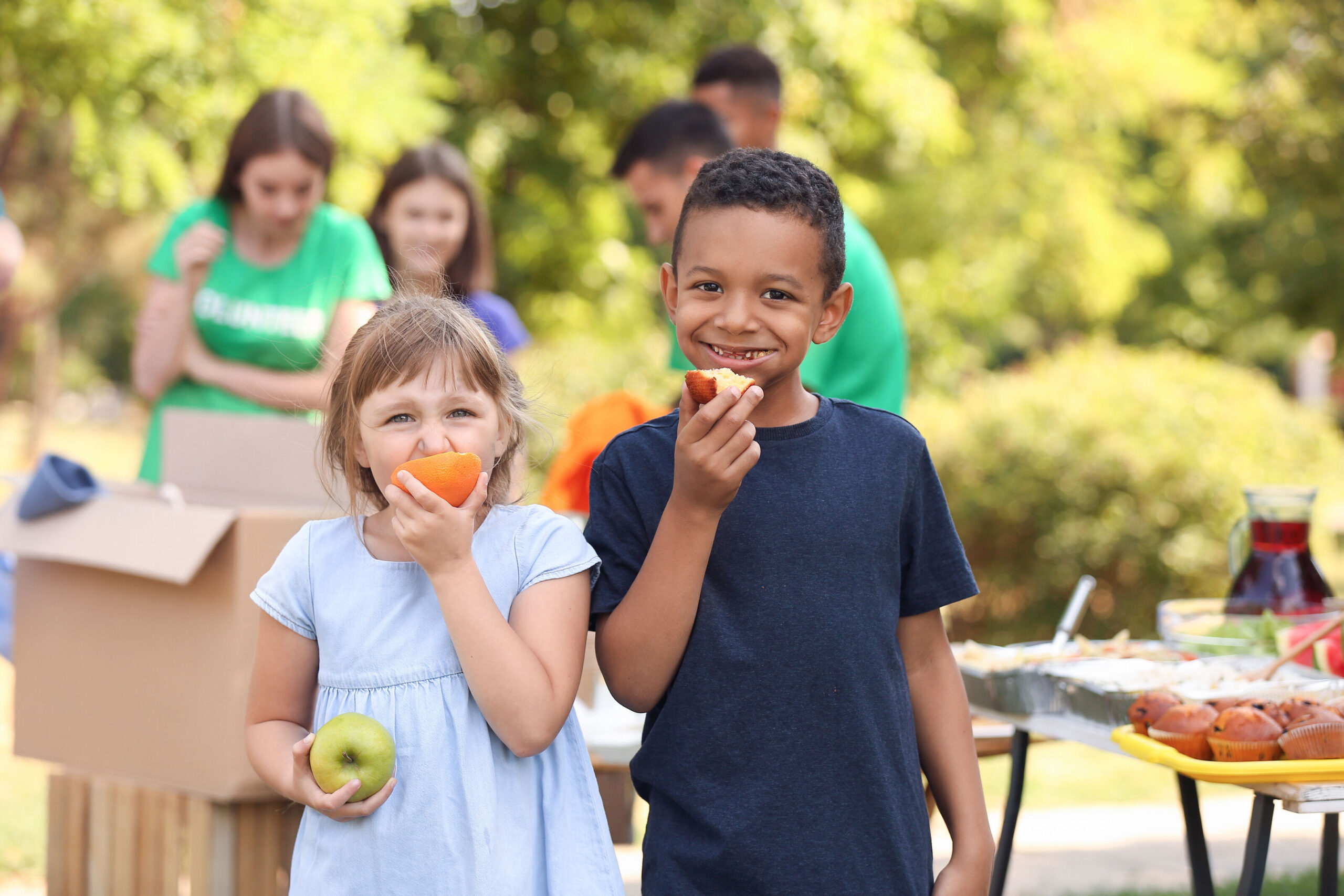Finding Hope and Support in America’s Food Assistance Network
Updated: Dec 22, 2025
When SNAP benefits disappear, it can feel like the safety net has been cut, but that doesn’t mean help is gone. Across the country, communities, nonprofits, and innovative programs are stepping up to ensure that every family has access to nutritious food and a path forward.

The Role SNAP Played and Why Its Loss Matters
For decades, the Supplemental Nutrition Assistance Program has been one of the strongest tools against hunger in the United States. Run by the U.S. Department of Agriculture, SNAP provided monthly benefits to help families purchase groceries, lifting millions out of poverty and reducing food insecurity across every state. In 2023 alone, over 42 million Americans relied on these benefits to make ends meet.
The impact hits immediately when those benefits are taken away through funding cuts, eligibility changes, or the end of emergency allotments. Grocery budgets tighten. Families stretch meals further. Local food banks see demand surge overnight.
But here’s what policy discussions often miss: the story doesn’t end there. SNAP’s reduction has forced communities to get creative, collaborative, and downright resourceful. New partnerships have formed. Old programs have expanded. And people are discovering that food assistance extends far beyond a single federal program.
From Safety Net to Support Network
Losing SNAP can devastate a household budget. No question about it. Yet it’s also brought renewed focus to the broader network of food programs designed to help people in need.
Take WIC (Women, Infants, and Children), for instance. This program supports low-income pregnant women and young children with healthy foods, nutrition education, and healthcare referrals. WIC serves about 6.7 million people monthly, focusing specifically on nutritional needs during critical developmental periods.
The National School Lunch Program has become even more vital. Free and reduced-price school meal programs ensure that students receive balanced meals even when their families struggle at home. Some districts have gone further, implementing universal free lunch programs that remove the stigma entirely. Kids eat. Parents breathe easier knowing at least one or two meals are covered.
Local programs have evolved rapidly too. Organizations like Feeding America have built nationwide networks connecting food banks, farms, and grocery stores to redistribute surplus food efficiently. In some cities, community fridges have popped up on street corners. Pay-what-you-can markets operate on sliding scales, offering both dignity and access.
State and Local Programs Filling the Gap
States and municipalities have stepped up when federal benefits shrink. California’s CalFresh expansion has made it easier for working families to qualify for benefits. Massachusetts runs the Healthy Incentives Program, which allows low-income residents to stretch their food dollars while supporting local farmers. For every dollar spent on produce at participating farmers markets, recipients get a dollar back on their EBT card.
Other states are investing in mobile food pantries, grocery delivery programs for seniors, and subsidized CSA boxes for low-income families. Even grocery chains and tech startups have gotten involved. Apps now connect families with local resources in real-time. What’s emerging is a more flexible, community-driven model of assistance.
Real Solutions Beyond SNAP
The end of SNAP benefits doesn’t have to spell hopelessness. In New York City, the nonprofit City Harvest collects millions of pounds of excess food from restaurants, farms, and supermarkets to feed hungry residents. They rescued 111 million pounds of food in 2023 alone.
Smaller communities have developed their own solutions. Faith-based organizations have expanded meal programs that go beyond handouts, offering job training, cooking classes, and financial literacy support. Churches, mosques, and synagogues are running food pantries six days a week, staffed by volunteers who live in the same neighborhoods they serve.
Farmers markets are playing a transformative role. Many now offer Double Up Food Bucks, a program supported by the Fair Food Network that doubles the value of food assistance dollars when spent on fresh produce. Families get twice as many fruits and vegetables while local farmers gain more customers.
The Power of Community Action
If there’s one bright spot in the conversation about SNAP being taken away, it’s the renewed energy among local communities. Neighbors are stepping up. Businesses are contributing. Volunteers are showing up in force.
Community gardens have become powerful local solutions. In cities like Detroit and Atlanta, urban farming initiatives are transforming vacant lots into vibrant sources of fresh food. Detroit has over 1,900 community gardens and urban farms now. When economic collapse hit the city hard, residents didn’t wait for government intervention. They started planting.
Many schools and universities have started campus food pantries too, recognizing that hunger affects students at every level. Student-run pantries at colleges now serve thousands of their peers who face the choice between buying textbooks or buying groceries.
What You Can Do Right Now
Losing access to SNAP doesn’t mean you’re out of options. Here are immediate steps you can take:
- Explore state and local food programs through your state’s Department of Human Services or local community action agency website. Many states have emergency food assistance programs specifically designed to bridge gaps when federal benefits end.
- Connect with local food banks and pantries in your area. Most offer drive-through pickup now. Some deliver. Many provide referral services to utilities assistance, job training, and healthcare enrollment.
- Check out food recovery initiatives near you. Apps like Too Good To Go and Flashfood redistribute unsold groceries directly to families at steep discounts.
- Get involved yourself by volunteering at a local pantry, organizing food drives, or supporting advocacy groups like the Food Research & Action Center that fight for food justice nationwide.
Stay connected. Many organizations work together, and finding one can open the door to several more forms of assistance.
The Economic and Social Impact
SNAP’s loss creates financial stress, but access to other programs and community support can significantly buffer the blow. Research shows that for every dollar spent on food assistance, there’s a measurable return to the economy. Farmers benefit from increased sales. Small grocery stores survive. Healthcare costs drop as families maintain better nutrition.
Community-based support often brings something SNAP alone couldn’t always provide: connection. Meeting others who share similar struggles reduces isolation. Learning new skills through cooking classes or gardening workshops builds confidence. Contributing to local food initiatives restores a sense of dignity and purpose.
The shift from isolation to inclusion is one of the most powerful antidotes to hardship. When people build new systems of care through community meals, co-ops, or volunteer networks, they also rebuild the social fabric that sustains us all.
Looking Ahead
The end of SNAP benefits for many families has prompted an important national conversation about ensuring no one in America goes hungry. Expanding universal school meal programs shows promise. Incentivizing local food production could strengthen food security while supporting rural economies. Policymakers are exploring hybrid models that combine digital accessibility, private partnerships, and public funding.
Education matters too. Teaching families about nutrition, budgeting, and cooking on a tight budget empowers them beyond immediate aid. Programs that blend food access with skill-building have shown long-term success in helping people achieve stability.
This moment can serve as a turning point. SNAP’s reduction has revealed both the vulnerabilities in our system and the resilience of our people. It’s a chance to reimagine what it means to take care of one another and to build a nation where food security is a right, not a privilege.
A Path Forward
The end of SNAP benefits closes one chapter but opens another filled with innovation, empathy, and shared effort. From bustling food banks to grassroots urban gardens, Americans are proving that hunger can be met not only with policy but with heart.
Whether you’re someone who needs help, someone who can give it, or someone who simply wants to make a difference, there’s a place for you in this growing movement. Food is more than sustenance. It’s community, culture, and connection. And when we share it, everyone thrives.
Sources
U.S. Department of Agriculture (USDA)

